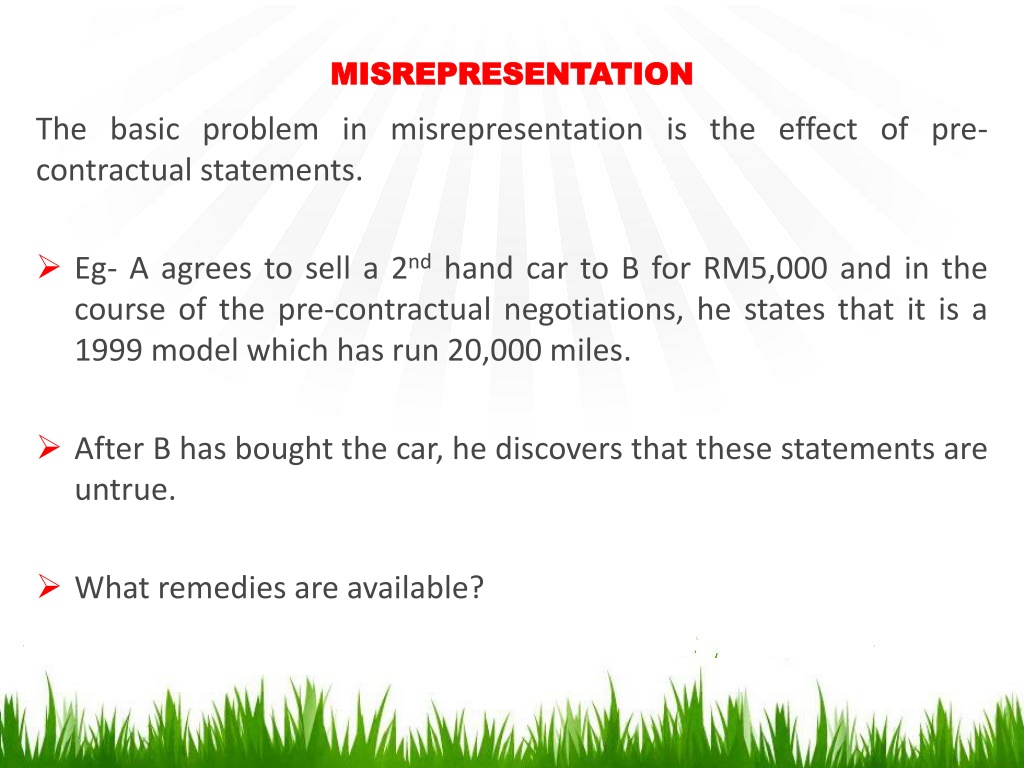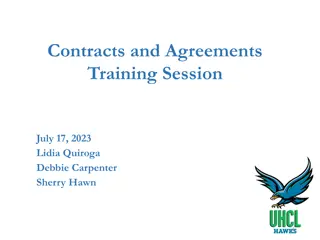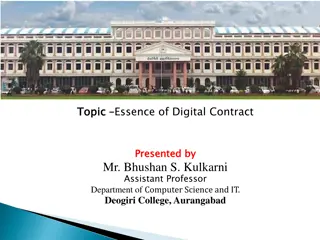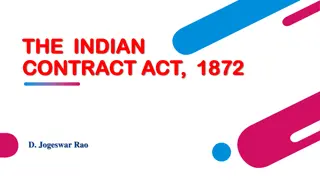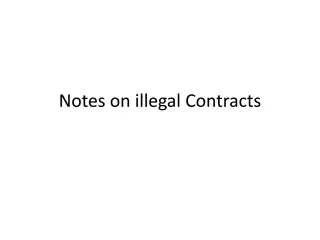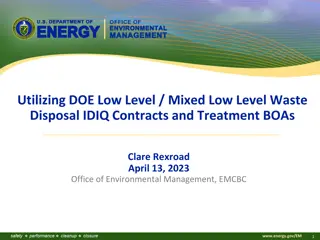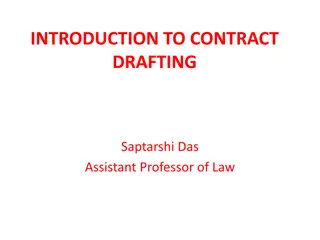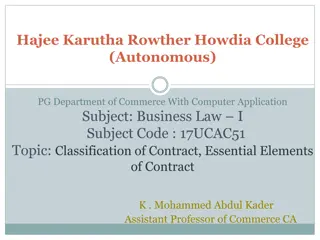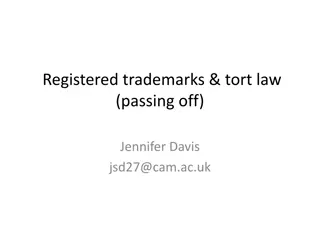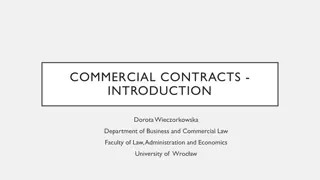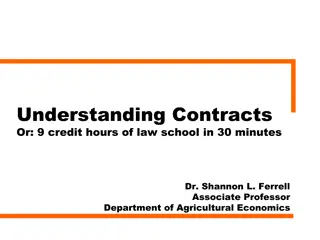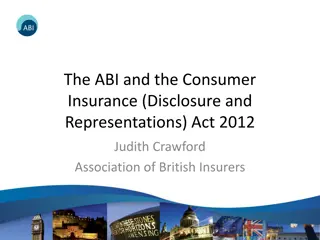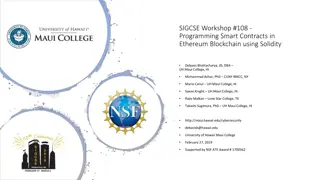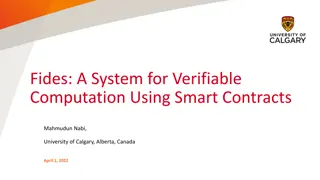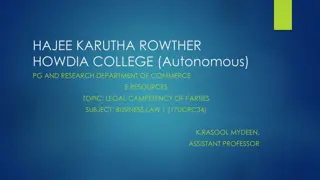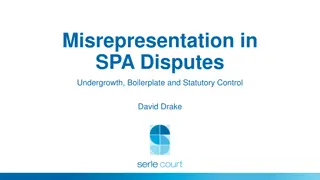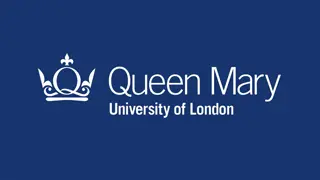Misrepresentation in Contracts
Misrepresentation in contracts occurs when false statements are made during negotiations, impacting the contract's validity. The common law approach distinguishes between promissory statements and mere representations, with remedies available to address misrepresentations. Hedley Byrne & Co. Ltd v Heller & Partners (1964) clarified the application of damages for innocent misrepresentation, emphasizing the distinction between contract and tort actions.
Download Presentation

Please find below an Image/Link to download the presentation.
The content on the website is provided AS IS for your information and personal use only. It may not be sold, licensed, or shared on other websites without obtaining consent from the author.If you encounter any issues during the download, it is possible that the publisher has removed the file from their server.
You are allowed to download the files provided on this website for personal or commercial use, subject to the condition that they are used lawfully. All files are the property of their respective owners.
The content on the website is provided AS IS for your information and personal use only. It may not be sold, licensed, or shared on other websites without obtaining consent from the author.
E N D
Presentation Transcript
MISREPRESENTATION MISREPRESENTATION The basic problem in misrepresentation is the effect of pre- contractual statements. Eg- A agrees to sell a 2nd hand car to B for RM5,000 and in the course of the pre-contractual negotiations, he states that it is a 1999 model which has run 20,000 miles. After B has bought the car, he discovers that these statements are untrue. What remedies are available?
The initial common law approach to this problem is based on the principle that promissory statements should be ineffective unless they form part of the contract Hence, the concept of MERE REPRESENTATION a statement of fact, which had induced the representee to enter into the contract but which did not form part of the contract
Hedley Byrne & Co Ltd v Heller & Partners [1964] It was decided in the House of Lords that the principle no damages misrepresentation is not fundamental for innocent Facts: did not take an action in contract but rather in tort
A representation is a statement of fact made by one party to the contract which although does not form part of the term of the contract, is yet one of the reason that induces the representee to enter into a contract A misrepresentation is merely a state of misrepresentation which is untrue. It is limited to a statement of fact. It is not a statement of opinion or intention.
